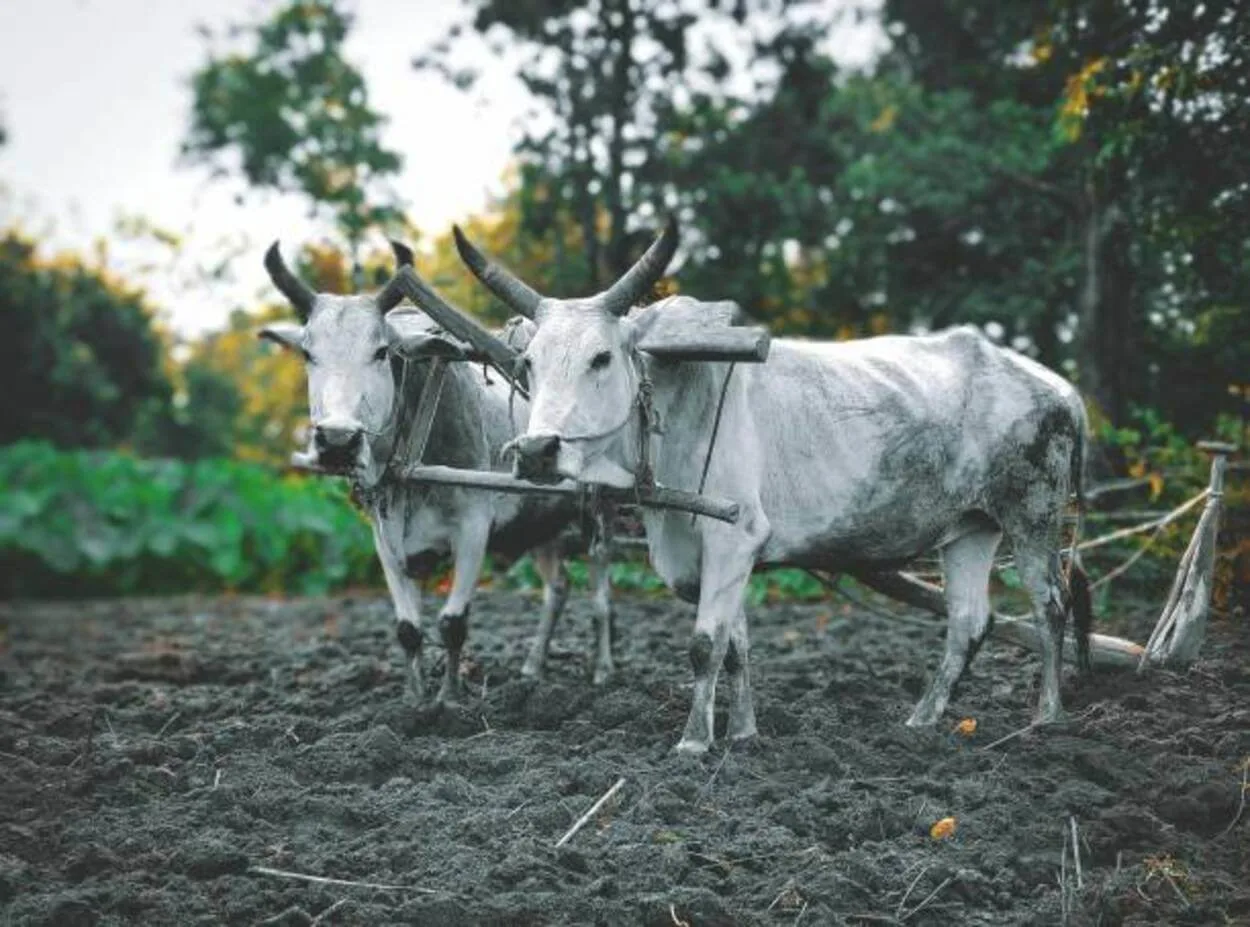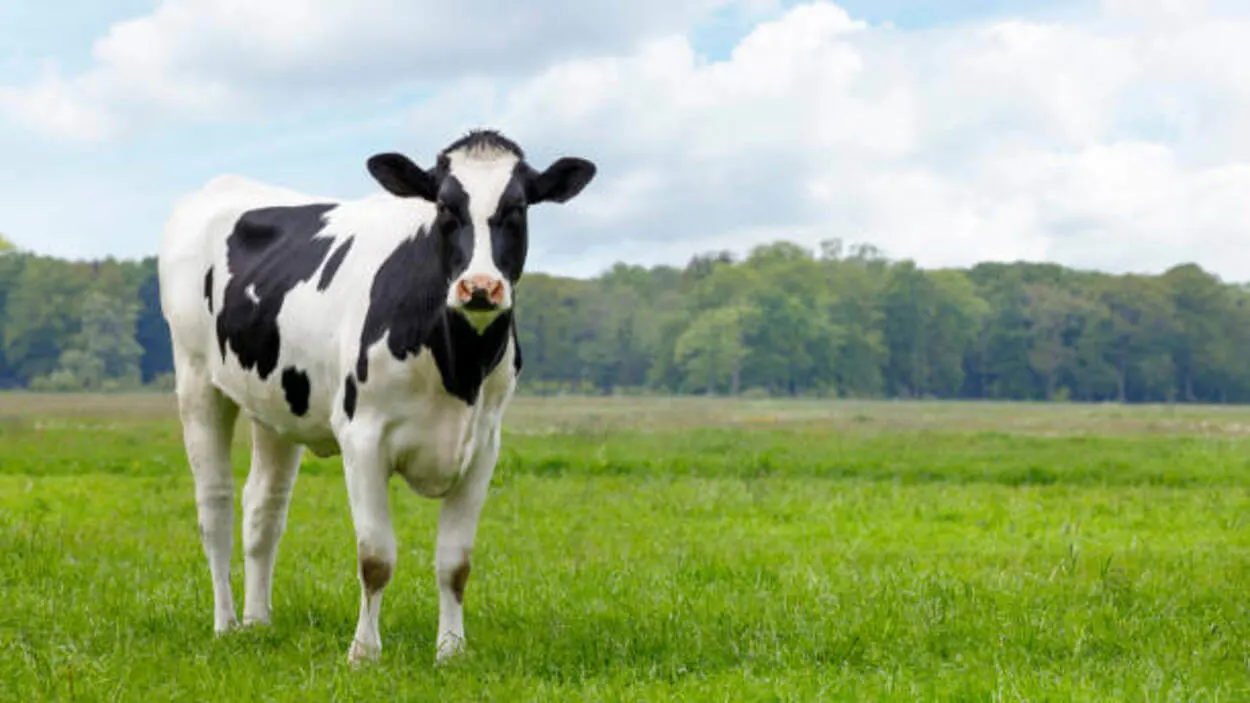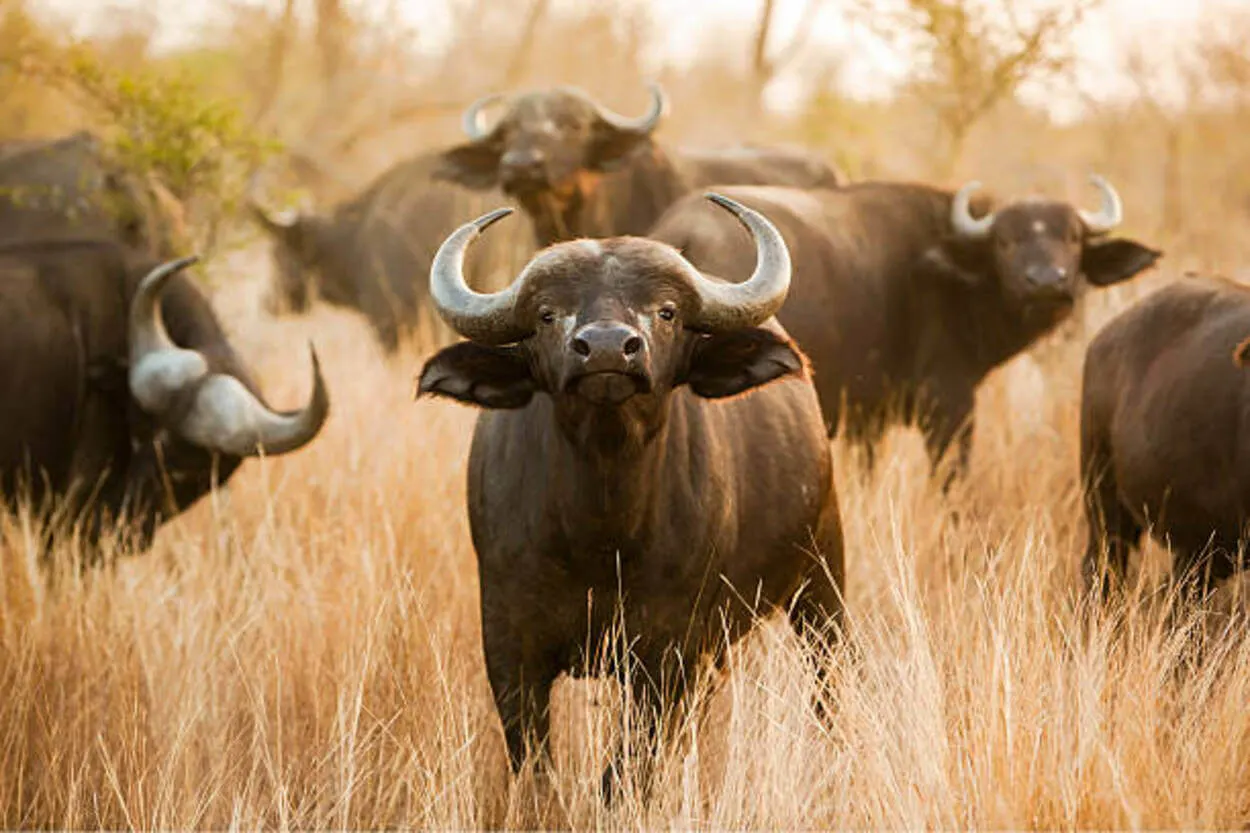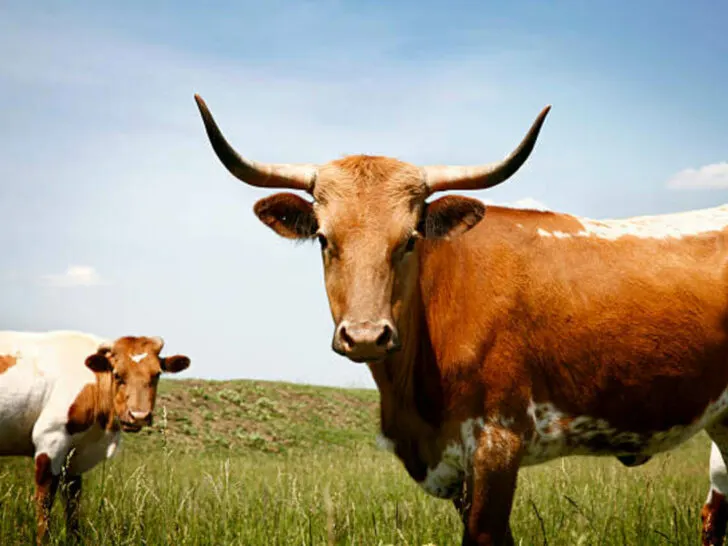If you plan to work in the cattle industry, you should be familiar with the terms cow, bull, ox, and buffalo. It’s unlikely that buying a bull when you wanted to buy a cow or a buffalo will have the desired effect.
Before you start looking for your first cow, it’s imperative that you have a firm grasp of the fundamental terms used in the cattle industry. How can a bull, cow, buffalo, and ox be distinguished from one another?
In this article, you will learn how these animals are different from each other.
What Is a Cattle Animal?
Bos taurus, or cattle, are big, domesticated animals with cloven hooves. They’re the most prevalent species of the genus Bos and a major contemporary member of the subfamily Bovinae. Adult males and females are referred to as bulls and cows, respectively.
Cattle are frequently raised as livestock for their hides, which are used to create leather, milk, and for meat (beef or veal; see beef cattle).
They serve as both draught and riding animals (oxen or bullocks, which pull carts, ploughs, and other implements). Cattle dung is another byproduct that can be converted into manure or fuel.
Some places, including sections of India, place a strong religious emphasis on livestock. Many small breeds of cattle, like the Miniature Zebu, are kept as pets.
Different geographical regions are home to various breeds of cattle. Most taurine cattle are found in temperate regions of Europe, Asia, the Americas, and Australia.
What Is a Buffalo?
We refer to a variety of cattle as buffalo. In North America, the term “buffalo” is frequently used to describe bison.
Buffalos are huge, cattle-like creatures, although they are not genetically related to cattle. A typical male buffalo measures 5 feet tall at the shoulder and weighs about 1600 pounds. They are about 7 feet long from nose to tail.
African buffaloes are a hardy species that often live in the wild. For food, they’re occasionally hunted. However, water buffaloes are primarily found in Asia.
Similar to how cows and oxen are utilized in other parts of the world, Asians use water buffaloes for agricultural purposes.
However, bison and real buffalo are only distantly related. The home to true buffalos include:
- South Asia,
- Southeast Asia
- Sub-Saharan Africa
These comprise the:
- The water buffalo
- The wild water buffalo
- The African buffalo
What Is an Ox?
A male cow that has been taught and used as a draught animal is called an ox, also known as a bullock. Castration reduces testosterone and aggression in adult male cattle, making them docile and safer to handle.
Oxen are frequently castrated. In some places, bulls or cows (adult females) may also be employed.
- Oxen are employed for a variety of tasks, including threshing grain by stomping it, powering equipment that grinds grain or provides irrigation, and transportation (pulling carts, transporting wagons, and even riding).
- Furthermore, oxen may be employed to skid logs in forests, particularly during select-cut, low-impact logging.
- Normally, oxen are yoked in pairs. One pair may be sufficient for light tasks, such as carrying household items on smooth roads.
- Additionally, pairs may be added for heavy work as needed. A team that is employed to carry a hefty weight over rough terrain may have more than nine or 10 pairs.

Cow vs. Bull
When talking about cattle, the terms “bull” and “cow” are frequently used. The fact that a bull is a male and a cow is a female frequently serves as a useful distinction between these members of the Bos genus.
Although that’s a plausible theory, it’s also very simplistic and ignores the subtle differences between these mammals.
Here’s the list of a few major differences between a Cow and a Bull:
- A mature female bovine is referred to as a cow, whereas a mature male bovine that has not been castrated is referred to as a bull.
- A bull aids in the reproduction of calves and can be used for meat, whereas a cow is herded as livestock and gives birth to calves.
- The name “bull” is used to describe the males of buffaloes and bovines, while the term “cow” often refers to the females of many big mammalian species.
- Bulls are perceived as being violent and dangerous, whereas cows are a calmer, more gentle part of the bovine family.
- Bulls are only useful for a maximum of 12 years, whereas cows can live up to 20 years and can be of service for the bulk of that time.
| Features | Bull | Cow |
| Sex | A mature male | A mature female that has been bred |
| Size | Larger, heavier, and more muscular than cows | Smaller than bulls not as muscular, and larger than heifer |
| Purpose | Breeding with cows | Used to birth calves Raised for milk Slaughtered for meat |
| Morphology | Most species’ males have horns Muscular, rounded shoulders Large head with prominent brow ridges over their eyes | Some species’ females have horns Possess udders Wider midsection and more angular shoulders |
| Age | 12-15 months and older | 2 years or over |

Are Buffalo and Ox the Same?
The words “ox” and “buffalo” are commonly used and heard. But many people are unaware of the distinction between the two. Some individuals even believe that the phrases “ox” and “buffalo” refer to the same animal. The distinction between a buffalo and an ox is obvious.
In comparison to an ox, a buffalo is bigger and has more hair. The male of the mammal cow is called an ox. It lacks an udder and is castrated once it reaches adulthood. Although not castrated, a buffalo is also a man.
The buffalo is a bovine mammal that’s mostly raised as cattle in Southern Europe, North Africa, South America, and Asia. The Universal Neonatal Foot Orthotic (UNFO) survey found that Asia was home to 97% of the world’s buffalo population.
Humanity can benefit from buffalo in a variety of ways. They’re employed in conventional agricultural practices, as dairy animals, and even for their flesh.
When dried, buffalo dung can be used as fuel for homes and makes an excellent fertilizer. These animals are kept as pack animals and are also used to carry hefty loads. Humanity can also benefit from oxen. These are bred as draught animals and employed for threshing crops, driving grain-grinding machinery, and other irrigation-related tasks.
In the deep forest, oxen are occasionally utilized to skid logs while working in pairs. These are used in pairs for minor tasks like hauling carts. A larger team is used when using the oxen for heavy tasks. The female buffaloes are larger than the males, and their weight can range from 400 to 900 kg. The many types of buffalo have distinctive horns.
Swamp buffaloes have gentler curved horns than river buffaloes, which have long curled horns. Compared to buffaloes, oxen frequently have paler coat colors.
Compared to buffaloes, oxen are nicer to people and easier to train. Buffaloes need grass, water, and shade all year long, hence they are typically found in grassy savanna lands and regions with an annual rainfall of more than 300 mm.
Difference Between an Ox and a Cow
A member of the Bovinae subfamily is an ox or cow. Cows and oxen do not differ significantly in their physiology.
However, people classify cows and oxen according to their particular farm uses. The unique differences between a cow and an ox are listed below:
- A female cow is one. It must be at least 4 years old and have given birth to one calf to be referred to as such. A bull is its male counterpart.
- On the other hand, an ox is a mature bull that has been castrated. Therefore, the main distinction between an ox and a cow can be stated to be gender.
- For their flesh, cows are bred as livestock. A supplier of milk and other dairy products like butter and cheese, it’s also a dairy animal.
- The ox is a draught animal in the meantime. It is employed to pull ploughs, sleds, and carts. It can also be employed as a form of heavy equipment to drive conventional agricultural tools like grain mills and irrigation pumps.
- An ox is typically more intellectual than a cow. Because an ox is a trained animal, this is the case. It has received training to properly comply with instructions from its handler.
- It can respond to prodding with a rope or whip or to spoken commands. Contrarily, cows are typically let graze. They are never trained by their owners.
- Large dairy factories’ commercial cows are housed in a unique corral. All they need to do to produce a lot of milk is eat and drink.
- An ox is larger, stronger, and more muscular than a human. Cows, on the other hand, typically lack the oxen’s stronger muscles.

Conclusion
- Cattle are either male or female; bulls are the former. More specifically, adult male cattle are referred to as bulls, and mature female cattle that have mated at least once are referred to as cows.
- Cows are grown to give birth to calves, and bulls are raised to breed with cows and heifers and create new cattle.
- Cows may also be slaughtered for their meat or utilized to produce milk for sale. However, bulls aren’t reared to be killed for their flesh.
- Buffalos are enormous cattle-like creatures that belong to the subtribe Bubalina.
- Male oxen are frequently castrated. Although they are males too, buffaloes aren’t castrated.
- Oxen are frequently employed for irrigation and other simple tasks like dragging carts.
- Buffaloes are primarily used for labor-intensive tasks like agriculture and hauling timber.

